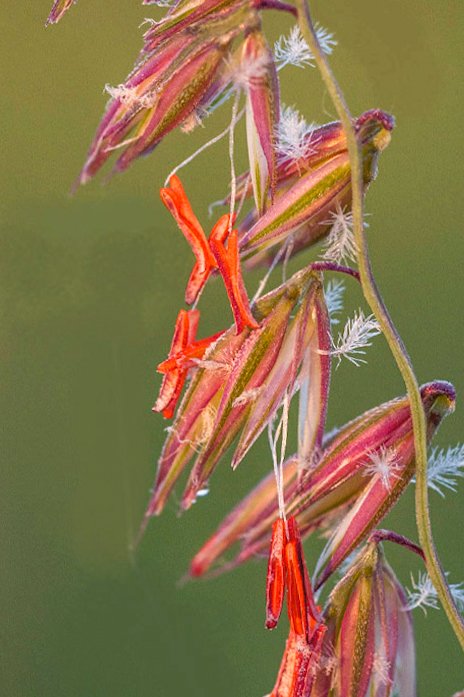 Image 1 of 10
Image 1 of 10

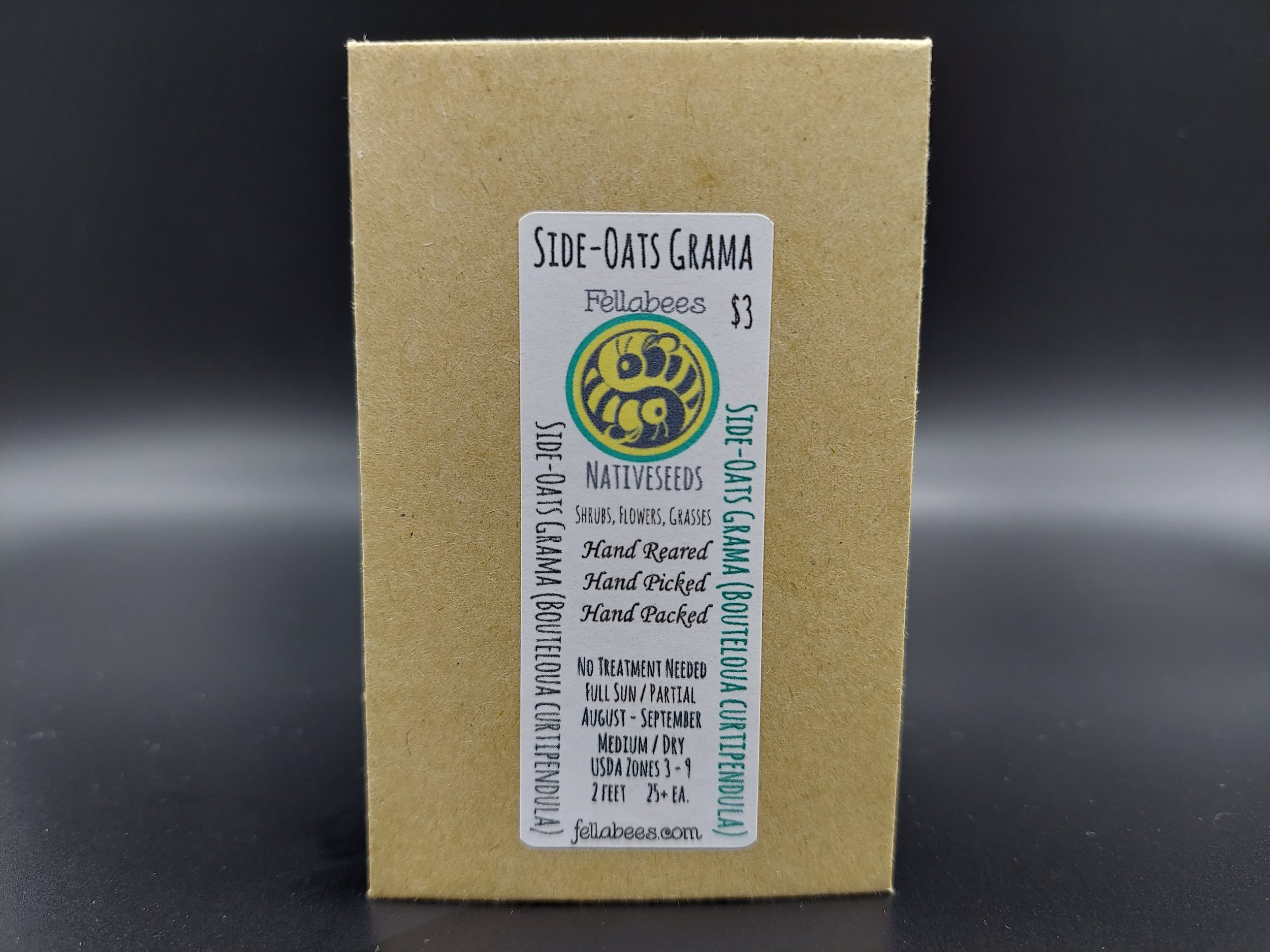 Image 2 of 10
Image 2 of 10

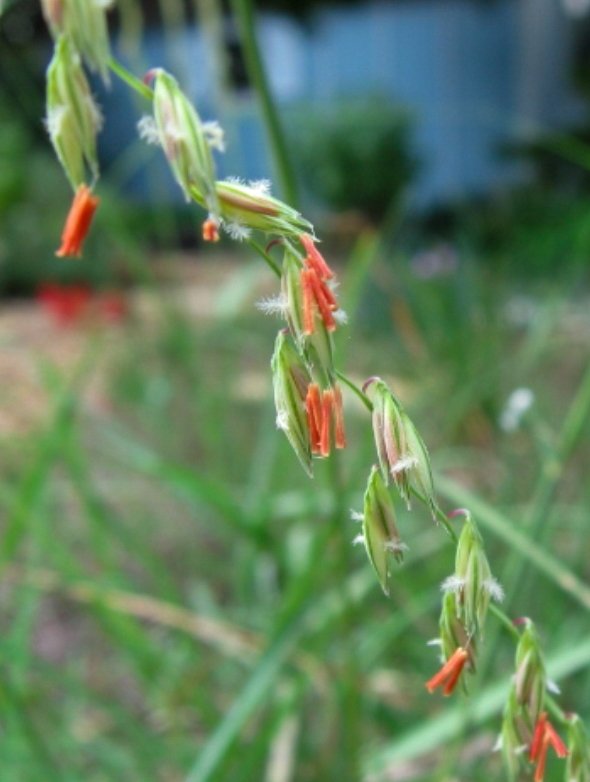 Image 3 of 10
Image 3 of 10

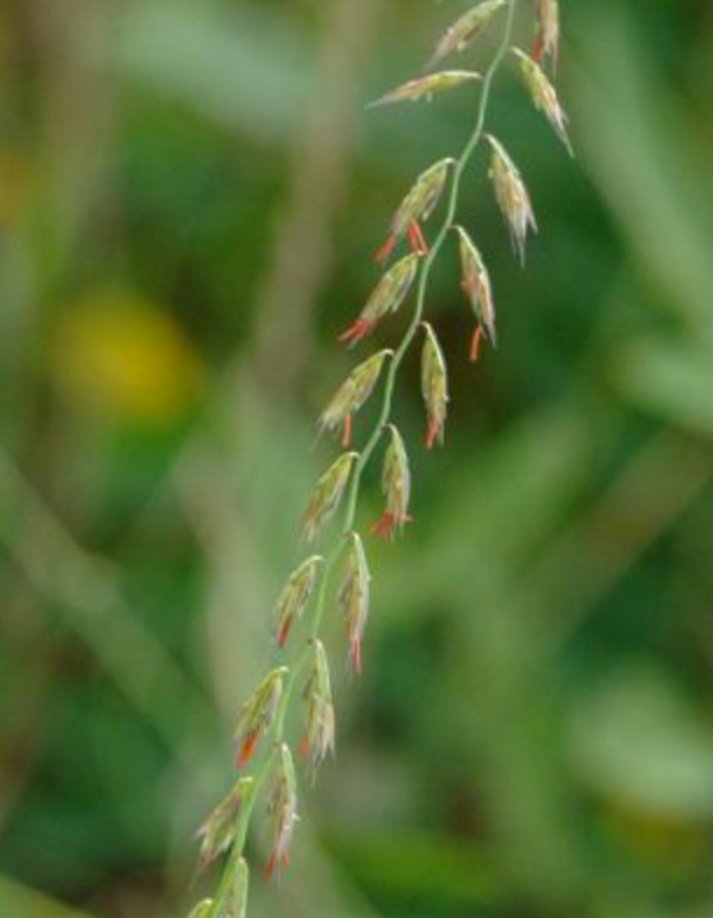 Image 4 of 10
Image 4 of 10

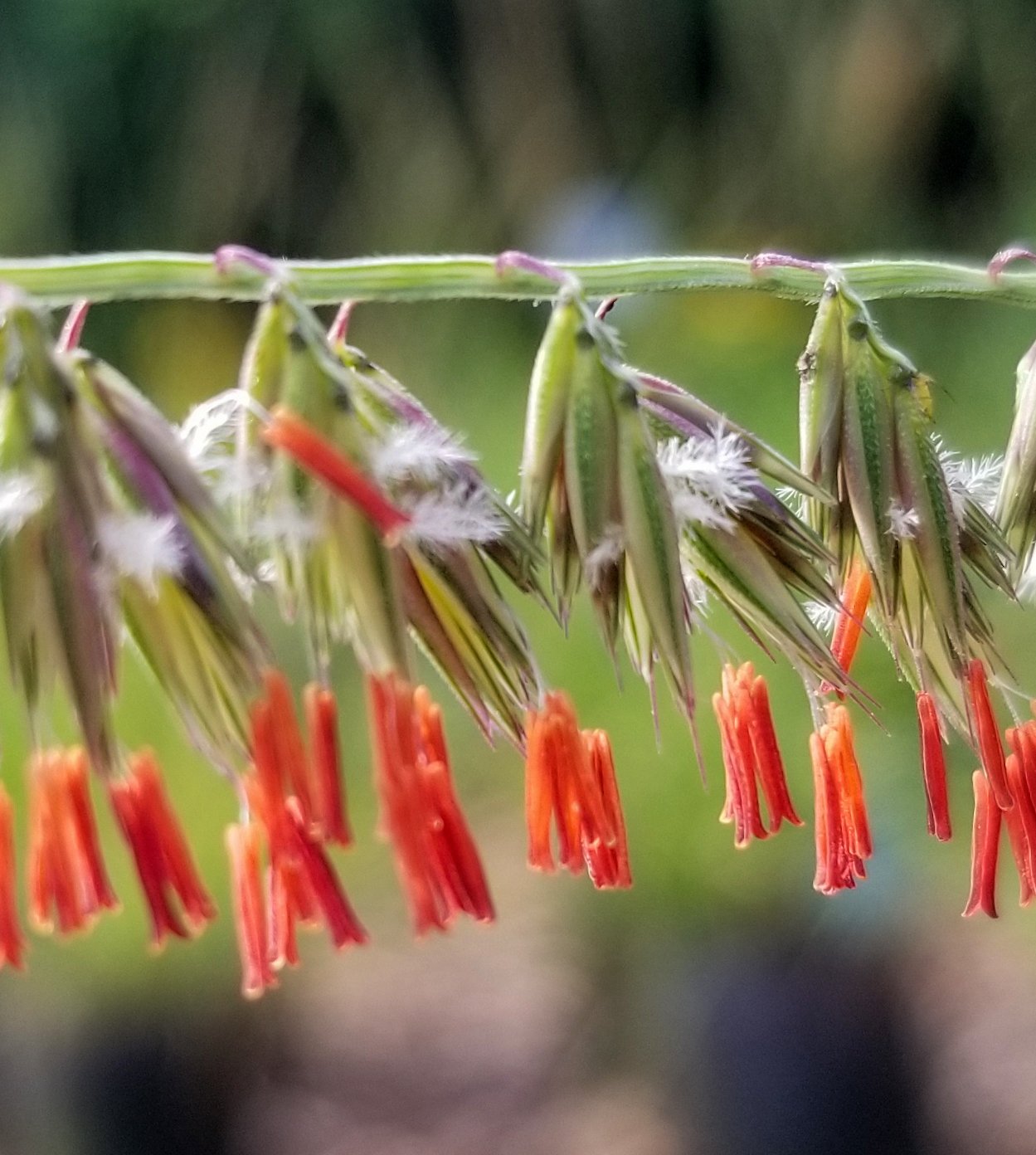 Image 5 of 10
Image 5 of 10

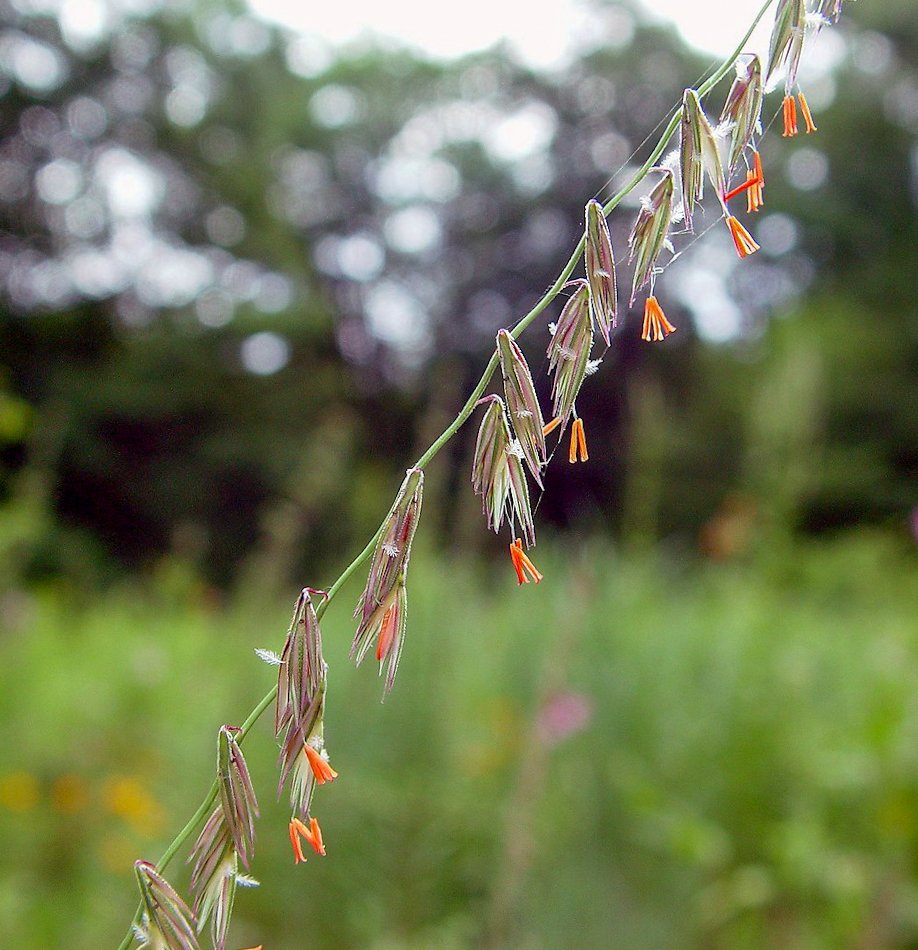 Image 6 of 10
Image 6 of 10

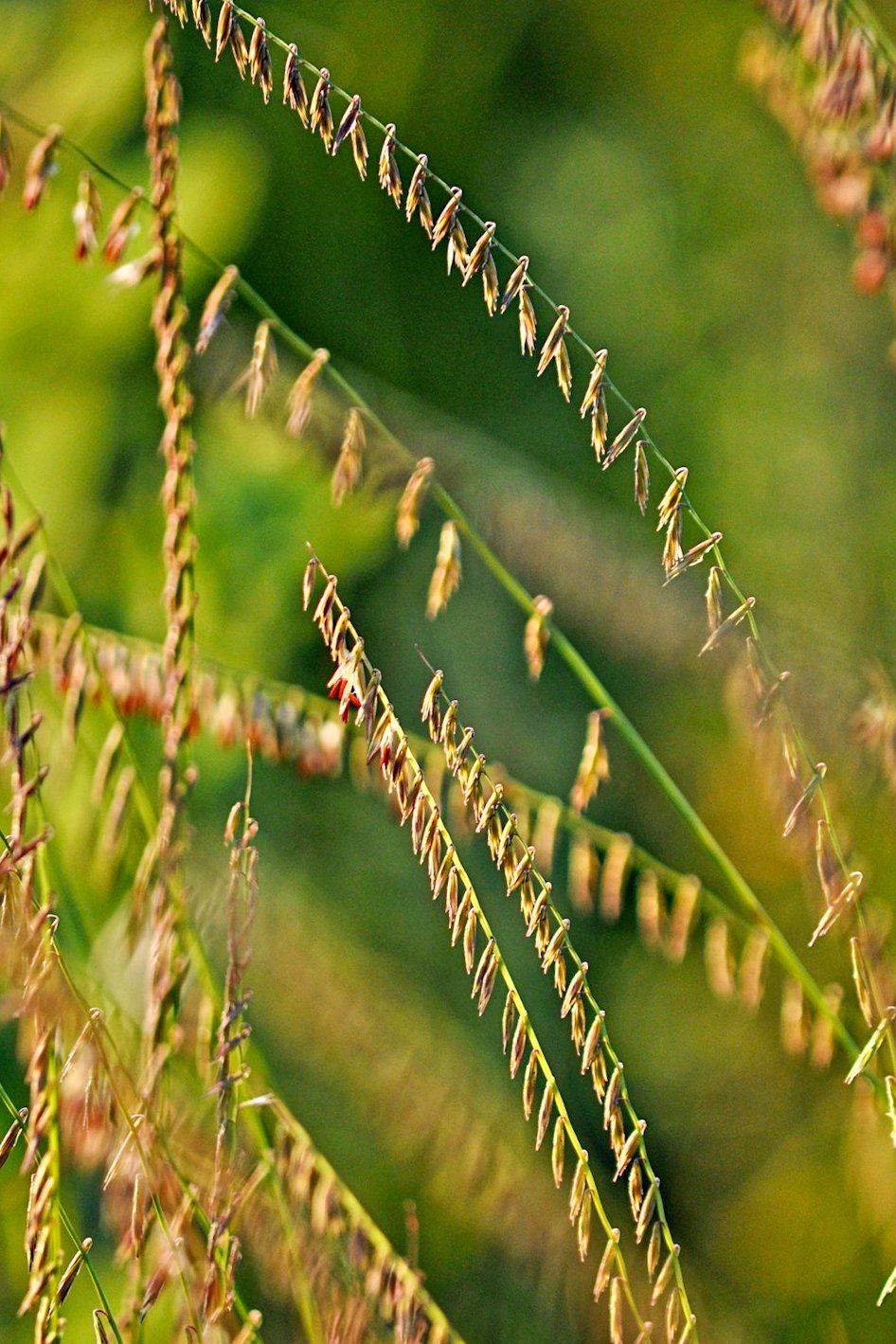 Image 7 of 10
Image 7 of 10

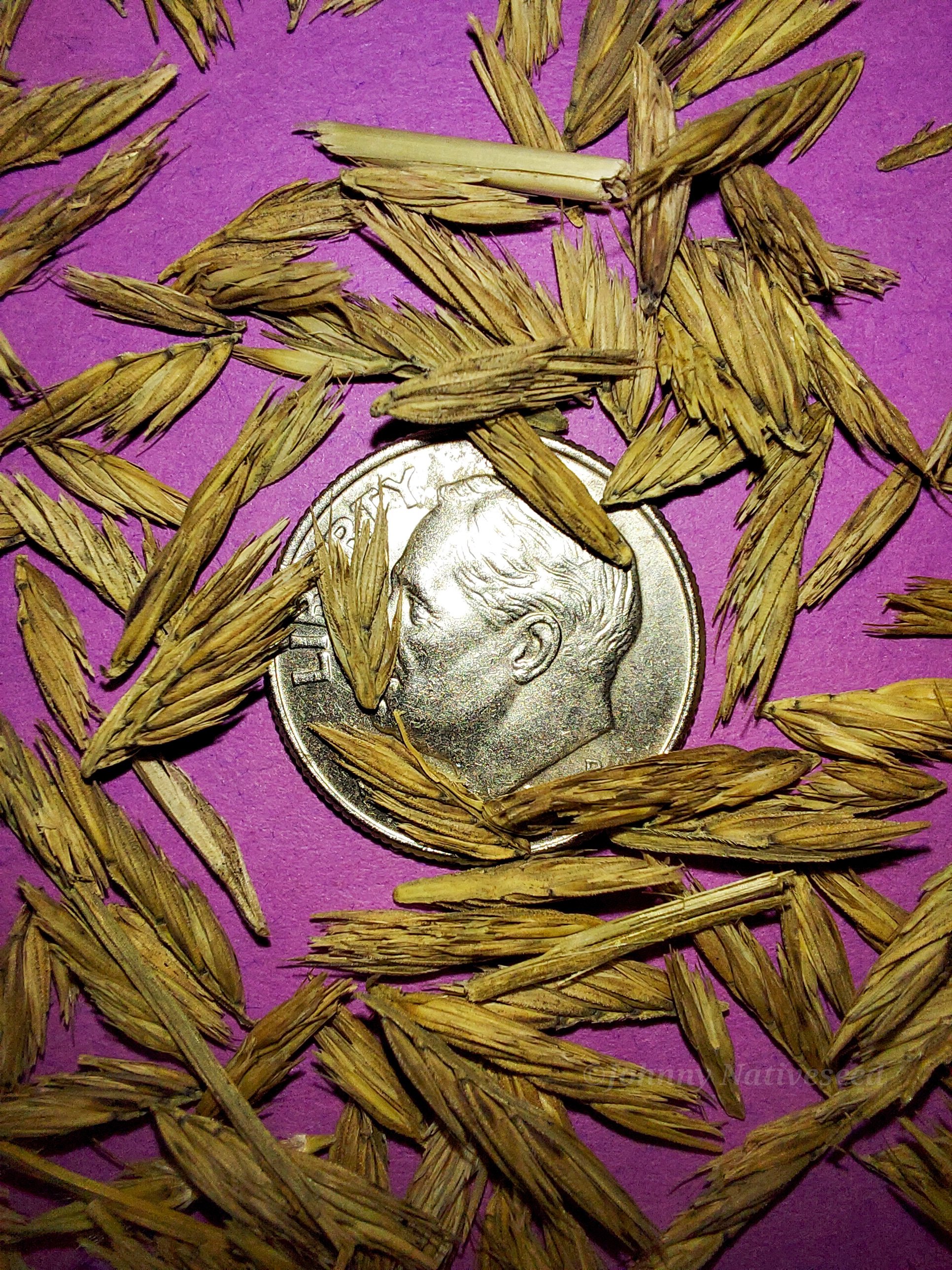 Image 8 of 10
Image 8 of 10

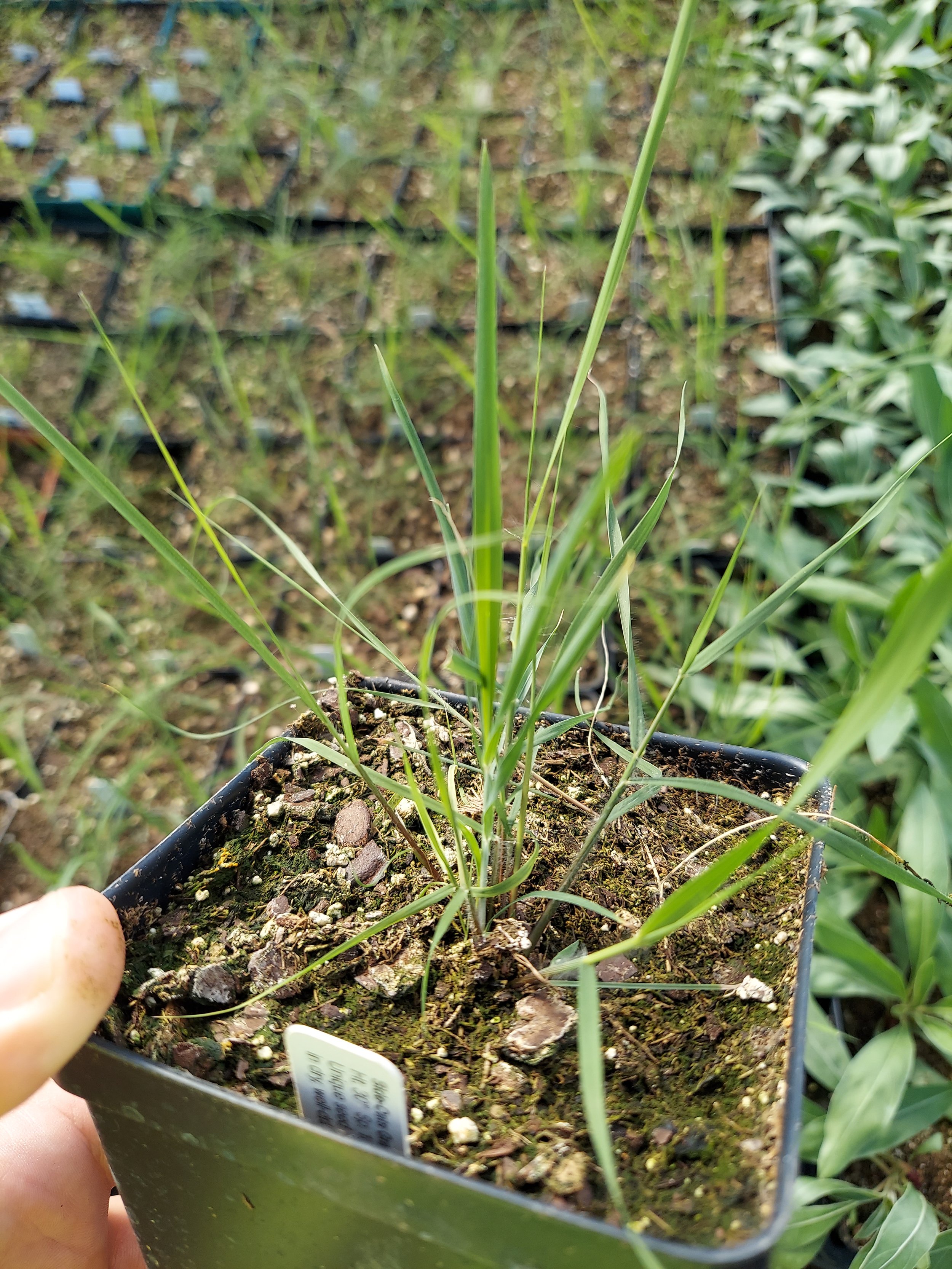 Image 9 of 10
Image 9 of 10

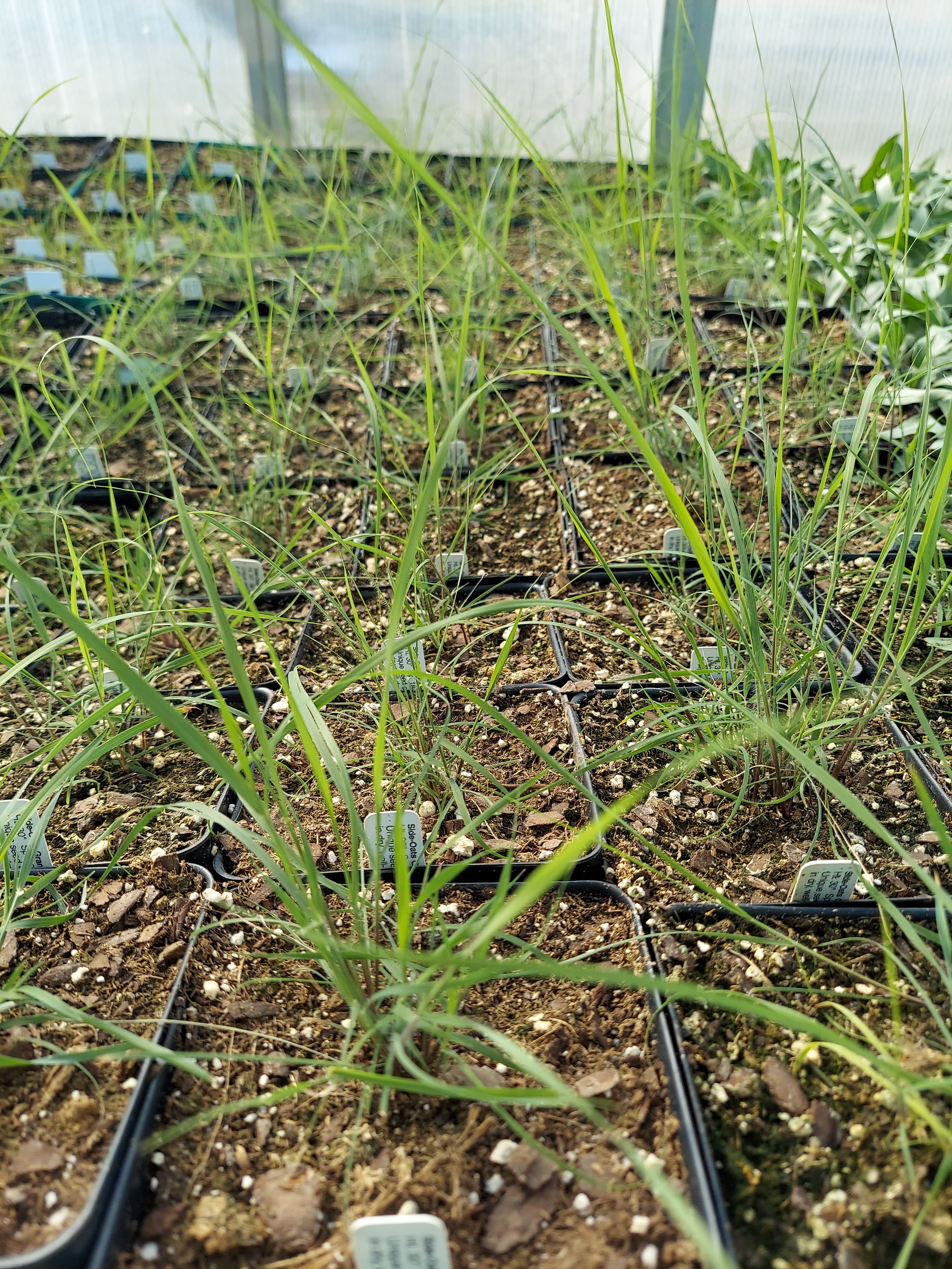 Image 10 of 10
Image 10 of 10











Side-Oats Grama (Bouteloua curtipendula)
Side-Oats Grama (Bouteloua curtipendula)
Bouteloua curtipendula, is the scientific name for this dynamic grass more commonly known as Side-Oats Grama.
It is a perennial, short prairie grass that is native throughout the temperate and tropical Western Hemisphere, from Canada south to Argentina.
Side-Oats Grama is a warm-season grass. The culms (flowering stems) 12–39 inches tall, and have alternate leaves that are concentrated at the bottom of the culm. The leaves are light green to blue-green in color, and up to 1⁄4 inch across.
The flowers of this grass bloom in summer and autumn. They consist of compact spikes that hang alternately in a raceme along the top 6 to 10 inches of the culm. The spikes often fall to one side of the stem, which gives the plant its name. There are roughly 10–50 spikes per culm, and in each spike there are three to six spikelets, or more rarely as many as 10! Each spikelet is between 3⁄16 to 13⁄32 inches long, and consists of two glumes and two florets.
One of the florets is fertile, and has colorful orange to brownish red anthers and feathery white stigmas during the blooming period, which contrasts with the pale green, pale red, greenish-red, or purple color of the spikes themselves!
After blooming, the spikes become straw-colored. The fertile florets produce seeds, and when they are ripe, the spikes fall to the ground.
Side-Oats Grama grows well on mountainous plateaus, rocky slopes, and in sandy plains. It is very drought- and cold-tolerant while being hardy in USDA Zones 3-9 (average annual minimums of -30 to 25 °F).
This grass plays host to the native Veined Ctenucha Moth (Ctenucha venosa)!
This grass is an excellent choice for slopes in need of erosion control!
Side-Oats Grama is currently listed as a threatened species in the state of Michigan and is considered as an endangered species in Connecticut, and is the state grass of Texas
It is also listed as present but rare in several counties of the states of New York, New Jersey, West Virginia, Kentucky, North Carolina, Georgia, Mississippi, and Florida.
Plant Details
USDA Zones: 3-9
Germination Needs: Needs no special treatment.
Life Cycle: Perennial
Sun Exposure: Full to Partial
Soil Moisture: Medium, Medium-Dry, Dry
Plant Spacing: 1-2 feet
Height: 2 feet
Bloom time: August, September
Bloom Color: Red
Advantages :
Bird Favorite: seeds, insects, fruit, nectar, nesting, perchs.
Deer Resistant: Yes
Excellent in the home landscape
Native to: Wisconsin, Minnesota, Iowa, Illinois, Indiana, Ohio, Michigan, Pennsylvania, New York, Maine, Connecticut, Maryland, West Virginia, Virginia, Kentucky, Tennessee, North Carolina, South Carolina, Georgia, Alabama, Mississippi, Louisiana, Florida, Texas, Oklahoma, Kansas, Nebraska, South Dakota, North Dakota, Montana, Wyoming, Colorado, New Mexico, Arizona, Utah, Nevada, and California.
.
.
Packet quantities:
We pride ourselves on ethical, hands on, ecological management, using no mechanical or chemical methods whatsoever.
All of our native seed is hand reared, hand picked, and hand packed from native prairies under our exclusive management, never breaking chain of custody from the field until it is sent to you. Each packet is hand prepared for shipment by us, directly.
Small seed species will contain greater than 20-25 seed
Large seed species will contain greater than 10-15 seed
It is our mission to spread the wealth of native plant and pollinator ecological sustainability, and educate back yard gardeners as well as corporate and government entities in how to germinate, grow, and benefit from native synergies.
Thank you for your support, it is because of you, that we can grow together to do, what we do.🐛🦋🐝🐞🌾🌱🌼🧡
Side-Oats Grama (Bouteloua curtipendula)
Bouteloua curtipendula, is the scientific name for this dynamic grass more commonly known as Side-Oats Grama.
It is a perennial, short prairie grass that is native throughout the temperate and tropical Western Hemisphere, from Canada south to Argentina.
Side-Oats Grama is a warm-season grass. The culms (flowering stems) 12–39 inches tall, and have alternate leaves that are concentrated at the bottom of the culm. The leaves are light green to blue-green in color, and up to 1⁄4 inch across.
The flowers of this grass bloom in summer and autumn. They consist of compact spikes that hang alternately in a raceme along the top 6 to 10 inches of the culm. The spikes often fall to one side of the stem, which gives the plant its name. There are roughly 10–50 spikes per culm, and in each spike there are three to six spikelets, or more rarely as many as 10! Each spikelet is between 3⁄16 to 13⁄32 inches long, and consists of two glumes and two florets.
One of the florets is fertile, and has colorful orange to brownish red anthers and feathery white stigmas during the blooming period, which contrasts with the pale green, pale red, greenish-red, or purple color of the spikes themselves!
After blooming, the spikes become straw-colored. The fertile florets produce seeds, and when they are ripe, the spikes fall to the ground.
Side-Oats Grama grows well on mountainous plateaus, rocky slopes, and in sandy plains. It is very drought- and cold-tolerant while being hardy in USDA Zones 3-9 (average annual minimums of -30 to 25 °F).
This grass plays host to the native Veined Ctenucha Moth (Ctenucha venosa)!
This grass is an excellent choice for slopes in need of erosion control!
Side-Oats Grama is currently listed as a threatened species in the state of Michigan and is considered as an endangered species in Connecticut, and is the state grass of Texas
It is also listed as present but rare in several counties of the states of New York, New Jersey, West Virginia, Kentucky, North Carolina, Georgia, Mississippi, and Florida.
Plant Details
USDA Zones: 3-9
Germination Needs: Needs no special treatment.
Life Cycle: Perennial
Sun Exposure: Full to Partial
Soil Moisture: Medium, Medium-Dry, Dry
Plant Spacing: 1-2 feet
Height: 2 feet
Bloom time: August, September
Bloom Color: Red
Advantages :
Bird Favorite: seeds, insects, fruit, nectar, nesting, perchs.
Deer Resistant: Yes
Excellent in the home landscape
Native to: Wisconsin, Minnesota, Iowa, Illinois, Indiana, Ohio, Michigan, Pennsylvania, New York, Maine, Connecticut, Maryland, West Virginia, Virginia, Kentucky, Tennessee, North Carolina, South Carolina, Georgia, Alabama, Mississippi, Louisiana, Florida, Texas, Oklahoma, Kansas, Nebraska, South Dakota, North Dakota, Montana, Wyoming, Colorado, New Mexico, Arizona, Utah, Nevada, and California.
.
.
Packet quantities:
We pride ourselves on ethical, hands on, ecological management, using no mechanical or chemical methods whatsoever.
All of our native seed is hand reared, hand picked, and hand packed from native prairies under our exclusive management, never breaking chain of custody from the field until it is sent to you. Each packet is hand prepared for shipment by us, directly.
Small seed species will contain greater than 20-25 seed
Large seed species will contain greater than 10-15 seed
It is our mission to spread the wealth of native plant and pollinator ecological sustainability, and educate back yard gardeners as well as corporate and government entities in how to germinate, grow, and benefit from native synergies.
Thank you for your support, it is because of you, that we can grow together to do, what we do.🐛🦋🐝🐞🌾🌱🌼🧡
Side-Oats Grama (Bouteloua curtipendula)
Bouteloua curtipendula, is the scientific name for this dynamic grass more commonly known as Side-Oats Grama.
It is a perennial, short prairie grass that is native throughout the temperate and tropical Western Hemisphere, from Canada south to Argentina.
Side-Oats Grama is a warm-season grass. The culms (flowering stems) 12–39 inches tall, and have alternate leaves that are concentrated at the bottom of the culm. The leaves are light green to blue-green in color, and up to 1⁄4 inch across.
The flowers of this grass bloom in summer and autumn. They consist of compact spikes that hang alternately in a raceme along the top 6 to 10 inches of the culm. The spikes often fall to one side of the stem, which gives the plant its name. There are roughly 10–50 spikes per culm, and in each spike there are three to six spikelets, or more rarely as many as 10! Each spikelet is between 3⁄16 to 13⁄32 inches long, and consists of two glumes and two florets.
One of the florets is fertile, and has colorful orange to brownish red anthers and feathery white stigmas during the blooming period, which contrasts with the pale green, pale red, greenish-red, or purple color of the spikes themselves!
After blooming, the spikes become straw-colored. The fertile florets produce seeds, and when they are ripe, the spikes fall to the ground.
Side-Oats Grama grows well on mountainous plateaus, rocky slopes, and in sandy plains. It is very drought- and cold-tolerant while being hardy in USDA Zones 3-9 (average annual minimums of -30 to 25 °F).
This grass plays host to the native Veined Ctenucha Moth (Ctenucha venosa)!
This grass is an excellent choice for slopes in need of erosion control!
Side-Oats Grama is currently listed as a threatened species in the state of Michigan and is considered as an endangered species in Connecticut, and is the state grass of Texas
It is also listed as present but rare in several counties of the states of New York, New Jersey, West Virginia, Kentucky, North Carolina, Georgia, Mississippi, and Florida.
Plant Details
USDA Zones: 3-9
Germination Needs: Needs no special treatment.
Life Cycle: Perennial
Sun Exposure: Full to Partial
Soil Moisture: Medium, Medium-Dry, Dry
Plant Spacing: 1-2 feet
Height: 2 feet
Bloom time: August, September
Bloom Color: Red
Advantages :
Bird Favorite: seeds, insects, fruit, nectar, nesting, perchs.
Deer Resistant: Yes
Excellent in the home landscape
Native to: Wisconsin, Minnesota, Iowa, Illinois, Indiana, Ohio, Michigan, Pennsylvania, New York, Maine, Connecticut, Maryland, West Virginia, Virginia, Kentucky, Tennessee, North Carolina, South Carolina, Georgia, Alabama, Mississippi, Louisiana, Florida, Texas, Oklahoma, Kansas, Nebraska, South Dakota, North Dakota, Montana, Wyoming, Colorado, New Mexico, Arizona, Utah, Nevada, and California.
.
.
Packet quantities:
We pride ourselves on ethical, hands on, ecological management, using no mechanical or chemical methods whatsoever.
All of our native seed is hand reared, hand picked, and hand packed from native prairies under our exclusive management, never breaking chain of custody from the field until it is sent to you. Each packet is hand prepared for shipment by us, directly.
Small seed species will contain greater than 20-25 seed
Large seed species will contain greater than 10-15 seed
It is our mission to spread the wealth of native plant and pollinator ecological sustainability, and educate back yard gardeners as well as corporate and government entities in how to germinate, grow, and benefit from native synergies.
Thank you for your support, it is because of you, that we can grow together to do, what we do.🐛🦋🐝🐞🌾🌱🌼🧡
